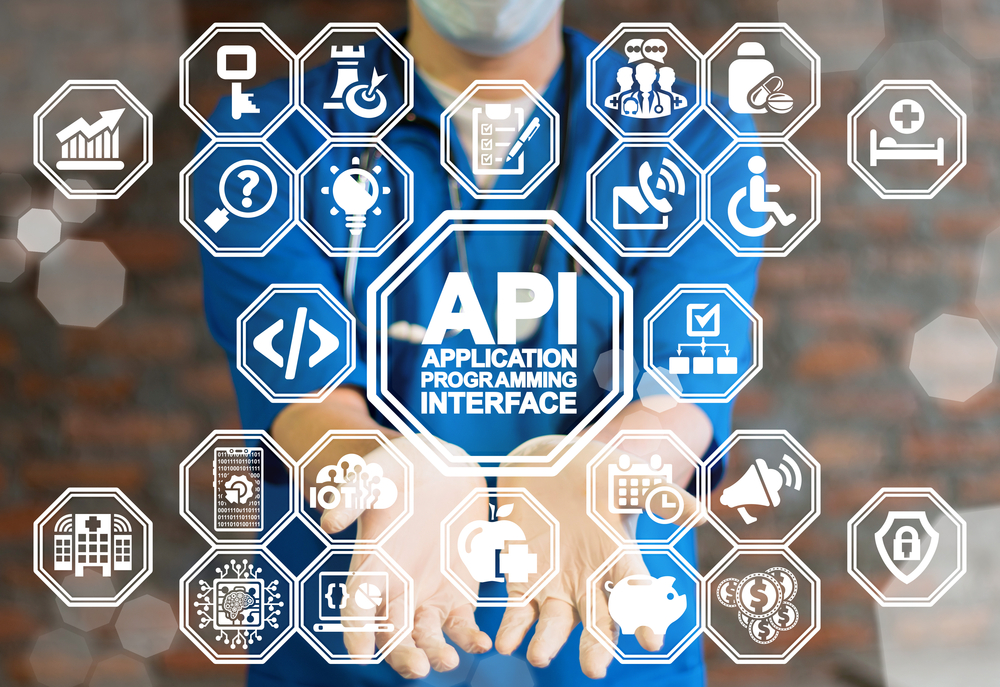The healthcare insurance market is expected to surpass $4.15 trillion by 2026. To keep up with the ever-increasing demand for health insurance services and meet patient expectations, private health insurance companies need to adopt technologies. This means that the topic of health insurance software development has never been more relevant for insurance providers that want to stay afloat and grow their business.
Are you among such companies? If so, you’ve come to the right place.
The health insurance industry aims to replace legacy claim management and insurance systems with automated all-in-one solutions to increase operational efficiency. Demigos has more than 5 years of experience in building healthtech solutions.
In this article, we’ll discuss the benefits you get if you develop custom health insurance software, the main types of software, and the challenges you may face down the road.
Without further ado, let’s dive in!
Key benefits of health insurance software

The key goal of health insurance software is to serve as a middle ground for patients, doctors, and insurers, streamlining experiences for all the parties involved. So, what are the main benefits private health insurance companies get from custom health insurance software development?
Automation of business processes
The business activities of a health insurance company involve multiple processes — a collaboration with clinics and patients, complex financial management, etc. They also include standard business processes like HR and recruitment, accounting, and compliance. You need to use a variety of software tools to streamline all the workflows.
Automated processes result in a variety of other advantages. For example, when all the health insurance information for each claim is provided by default, and the system checks the validity of the claim, it supports real-time decision-making. So you can allocate the resources in the most optimal way.
A decision to develop health insurance software suited to your organization's needs can also help you minimize the risk of human error, saving a ton of time, money, and effort while ensuring a positive customer experience.
Effective communication
Medical insurance applications create a centralized platform for communication between insurers, clinics, and patients. This ensures that every party can be reached easily when the need arises, and all the communication is tracked and securely stored for further audits. For instance, a health insurance platform can support live chat, video calls, emails, co-browsing, chatbots, or route customers to phone calls with a contact center.
Support for decision-making
Yet another benefit of having all the insurance processes performed via a digital platform — you have instant access to the whole history of claims and reimbursements to support decision-making. Reduced paperwork and readily available standardized forms are a huge improvement compared with endless back-and-forth emails and calls.
Making informed claim resolution decisions based on this data enables the insurer’s business to work more effectively and fulfill its contractual obligations to customers and clinics.
Improved customer experience
Health insurance software allows patients to perform most insurance-related activities with several taps in a mobile application or with several clicks on an automated web platform.
Searching for doctors within their provider’s network or looking up hospitals and pharmacies covered by their insurance plan — patients must be able to do all of this and more.
For example, while normally the clinics charge the insurance companies, when claiming for childcare or eldercare, road accident emergencies, or when receiving care out of the health insurance provider’s network, patients must submit the claim on their own. This means they must be able to log into your app and fill out the necessary forms with ease.
The same applies to healthcare providers. Medical centers also benefit from automated claim management capabilities, as they can dedicate fewer resources while ensuring a predictable reimbursement process.
Improved customer retention
Acquiring a new customer can be much more costly than retaining an old one, so prioritizing customer retention must be one of your primary goals. Fast insurance claim reimbursement and streamlined workflows result in better customer satisfaction, which leads to better retention. This also bolsters your brand recognition and supports further user base growth.
As you can see, adopting modern technology to replace manual or legacy health insurance management systems can help save your resources while improving the consistency and efficiency of your work. This is also needed to integrate additional business models like AgeTech and remote home care into your list of offerings. The question is — what software solutions can we build to enable all these benefits?
Main types of health insurance applications

Most health and medical insurance market players use a wide range of tools in their work. You can either go for building an all-in-one solution or try to create health insurance apps covering separate processes. These are the main types of health insurance software:
Claims processing software
Claim management procedures can include negotiation, litigation, claim assessment, policy details and settlement communications. The insurers can streamline claim management by using tools that enable automated generation of claim documents, management of the reimbursement process, and claim settlement with preconfigured workflows. Based on G2 ratings, good examples of such software are Applied Epic, Guidewire ClaimCenter, Snapsheet, and FileHandler Enterprise.
Read also: Building custom medical billing & claim processing software.
Agent management tools
Insurance is not all about reimbursement. Agents also need convenient tools to assist in their work. Such tools can include a variety of functions: marketing automation, customer relations management, data handling and storage, sales team communication, payment processing, in-depth reporting and analytics, and business process management. The best examples of such software include Applied Epic, AgencyBloc, BindHQ, AMS360, and QQCatalyst.
Policy management apps
Policy management apps allow for policy creation and administration. Their main features include policy issuance, compliance management, claims tracking, billing and accounting, and customer portals.
Using all of these features helps ensure operational efficiency with minimal resource usage. According to Software Advice, reliable platforms providing such functionality are SiegeAMS, SimpleSolve, Sibro v3, RiskVille, Jenesis Software, and A1 Tracker.
Document management systems
Centralized document storage enables secure and transparent access to signed policies and applications in progress, customer claim proofs, policyholder agreements, etc. Key functions of such software include document capture and imaging, copy-proof viewing, document indexing and publishing, records management, and secure document disposal. Also, the advanced security of these systems helps to prevent data breaches.
Based on the Software Advice rating, good choices in this category include PandaDoc, Wrike, Nintex Process Platform, Legito, and FileHold, among others. But they are not tailored to the needs of the health insurance industry. So, it’s better to opt for custom development if you want to have software that will meet your unique requirements.
Lead management CRM
Like any other business, an insurer must leverage a streamlined process of lead acquisition and management to ensure potential contacts become long-term customers. This means you need a contact database, sales pipeline, and analytics. While using any standard CRM might seem sufficient, you’d actually be better off using custom-built HIPAA-compliant software as you handle sensitive health information.
Data analytics tools
It would be unwise to avoid using AI and big data analytics when you already have access to a goldmine of data. Implementing AI algorithms and performing real-time data analytics can help identify potential prospects faster, gain market insights, and prepare personalized policy offers catering to the specific needs of any individual customer.
Read also: Building a Custom Healthcare Analytics Solution
Risk management platforms
Where the money goes, fraud follows. There is no need to highlight the danger of fraudulent claims, both for your bottom line and brand reputation. Thus, insurance companies must use digitized risk assessment software to identify potentially risky customers and prevent fraudulent activities.
This list is by no means exhaustive, as your particular insurance organization might need a much wider range of solutions, depending on your business objectives and strategy. However, the key point here is that the platform you use must encompass the toolkit for accomplishing all those tasks. But what health insurance app features should such software include?
Health insurance apps: Features to consider

There is a wide range of activities that a health insurance agency must perform as a part of its normal operations. So, health insurance system features must support these activities.
Management of ID cards
Your health insurance software should support secure access and single sign-on with healthcare ID cards — digital profiles of insured people containing all the information relevant to their treatment and insurance coverage. As a middle ground between an insured person and a clinic claiming reimbursement for their services, your software should be able to quickly and reliably identify all the players involved.
Plan coverage check
The software should provide a transparent overview of all the coverage conditions of any selected insurance plan. This will help your customers select the plan that fits their needs best. Creating a short questionnaire when designing your health insurance app can help narrow down a list of potential options.
As a part of insurance management, health insurance software should also provide a calculator to enable patients to calculate the cost estimates of doctor visits or treatment plans. This will help them understand which treatment options are covered by their insurance policies at a glance and avoid unnecessary confusion.
Claim management
Your software must allow you to view all the opened claims, sort them against certain parameters and reimburse them via securely integrated in-app payment gateways. There are ever-increasing regulations and up-and-coming new business models. So, there’s a need for better collaboration on claim processing and in-depth analytics. That’s why this feature is one of the cornerstones to address when developing a health insurance application.
Naturally, as it involves handling sensitive insurance-related data, claim management requires secure document storage and authorized access. This includes using strong encryption and configuring a granular role-based access process.
Overview of physicians & healthcare providers
Health insurance apps must enable convenient selection of all the clinicians covered by any particular medical insurance policy. This means your software must enable simple search and filter across the network of specialists instead of tiresome research for a suitable healthcare provider.
Also, enabling a concierge service with a live person or a chatbot can be a good solution to help patients select the correct doctors based on their symptoms. This will result in fewer incorrect appointments and potential improper insurance claims.
On top of that, patients must be able to select from a list of healthcare providers covered by their insurance policy. This way, patients can make informed decisions and select appropriate services to improve their healthcare outcomes.
Medication management
Insurance apps should allow the patients to search for information about the drugs prescribed, check for their availability in pharmacies nearby, compare their prices, and check and automatically refill prescriptions. This means your platform must support API integrations with a wide range of pharmacy and healthcare systems.
As you can see, developing a health insurance application with all the required features demands the use of a wide range of technologies, from API integrations with third-party healthcare software to secure data storage and management. Which technology stack can you choose to make this all possible?
Health insurance software: Tech stack

Based on the above, when you decide to make a health insurance app, you should select a technology stack that will be able to support the needed functionality. Here is the list of technologies Demigos uses when building healthtech.
Python
Being one of the most popular, robust, stable, performant, and feature-rich programming languages, Python is an excellent choice for backend development. Besides, it is a language of choice for big data analytics and DevOps scripting, making product delivery automation and data analytics integration much easier.
React
React is a modern JS library for front-end development. The key goal of React is to be scalable, reliable, and simple. This allows for building modular web applications that can adjust the data without reloading the page, greatly improving the stability and performance of your projects and ensuring a seamless end-user experience.
React Native
React Native is a framework enabling the creation of cross-platform mobile apps. The main benefits are the near-native look and feel of these apps and reduced development time due to the codebase reusability. Being one of the most popular mobile app development frameworks, React Native is a solid choice for building secure, scalable, intuitive, and visually stunning mobile apps.
AWS
AWS provides on-demand cloud infrastructure, allowing users to get the full range of services needed to run their app. It also enables scaling up and down with ease when needed. Besides, using AWS greatly simplifies integrations with third-party modules and implementing additional features like big data analytics or machine learning, as AWS provides a wide selection of tools for that purpose.
But don’t expect the development to be smooth and simple at all times. Building software for an insurance company is a complex and heavily regulated process.
Below are the most common challenges you’re likely to face if you decide to implement an insurance app.
Health insurance application development challenges

Your future software must be HIPAA and/or GDPR compliant, share data well with a variety of third-party tools, and provide secure customer authentication. Let’s briefly discuss each of these concerns.
HIPAA and GDPR compliance
As your future product will be handling patients’ sensitive medical data, it should comply with all the requirements of HIPAA/HITECH, GDPR, PIPEDA, PCI DSS, and other regulatory acts. At Demigos, we know how to build a health insurance app or any other healthcare solution that will comply with regulations.
For example
When building GapNurse, a medical staffing platform, Demigos had to enable consistency across resources while also ensuring data protection, HIPAA compliance, and security of payments.
Data sharing
A standalone app is nothing to write home about. Only when it can exchange data freely with other platforms can it bring real value to users. API integration helps share the data easily between various software tools, improves operational workflows, and provides better user outcomes. By seamlessly utilizing existing customer data to support claims, API integration ensures a positive end-user experience for your customers.
However, due to the sheer variety of healthcare software and data formats in use, ensuring seamless (and secure) data interchange can be quite a complicated task. So, you need to find reliable developers who know how to do it right and can support you throughout the health insurance app development process.
Read more: Interoperability in Healthcare.
Data protection and security
While regulators demand you ensure the safety of your customer data, it all boils down to correctly configuring cloud security settings, user privileges within the app, and data controls at rest and in transfer. This may seem obvious, but not all programmers know how to do it correctly, which can result in data breaches or account takeovers.
There are various approaches to ensuring data security. They include multi-tiered user authentication, role-based access control and privileges, TLS-SSL certificates usage across the app, in-depth logging of admin activity, brute force attack alerts and prevention, and much more. Demigos uses all of these tools to ensure the security of your future customers’ data.
Read also: How to avoid data breaches in healthcare.
Wrapping it up
As you can see, building a health insurance app is no easy feat, as you must address a lot of concerns to ensure the future product will comply with regulations and deliver value to all the parties using it. Ensuring this outcome requires an in-depth understanding of health insurance software development and solid expertise with building healthtech.
Demigos can guarantee these outcomes since we have more than five years of experience in delivering healthcare solutions for startups, enterprises, medical companies, and healthcare providers. Take a look at our portfolio and see for yourself!
Should you have more questions about how to best build your future health insurance app — contact us, and let’s talk business!






